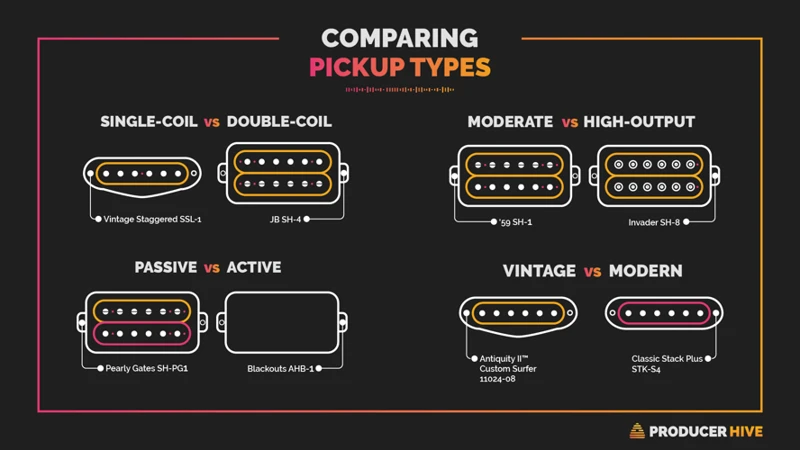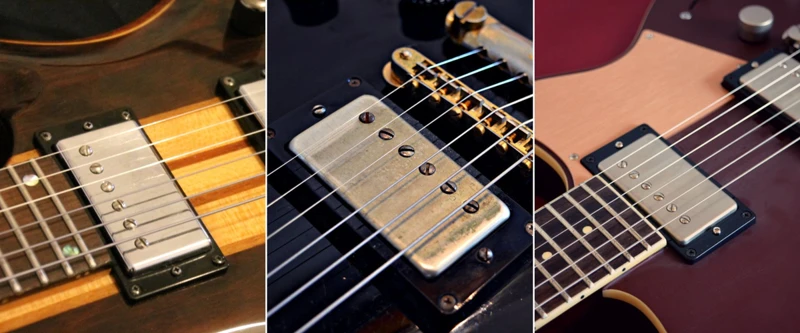Country music has a rich history and a sound that is instantly recognizable. One of the defining elements of country music is the distinctive twang of the guitar, often achieved through the use of pickups. Pickups play a crucial role in shaping the tone and character of a guitar, and in country music, the debate between vintage and modern pickups is a hot topic among musicians and enthusiasts. In this article, we will explore the differences between vintage and modern pickups in country music, and how each type contributes to the unique sound of the genre.
Vintage Pickups
When it comes to vintage pickups in country music, many purists argue that they offer a warmth and character that is hard to replicate with modern technology. Vintage pickups are often associated with classic guitars from the 1950s and 1960s, such as the Fender Telecaster and the Gibson Les Paul. These pickups are known for their smooth, rounded tones and rich harmonic content, which give country music its signature twang.
The Telecaster and its Twang
The Fender Telecaster, also known as the “Tele,” is a legendary guitar that has been a staple in country music since its introduction in the 1950s. The Telecaster is often equipped with single-coil pickups, which have a bright and twangy sound that is ideal for country music. Artists like Merle Haggard, Brad Paisley, and Keith Urban have all relied on the Telecaster’s vintage pickups to achieve that classic country sound.
Gibson’s PAF Pickups
On the other hand, Gibson’s PAF (Patent Applied For) pickups, found in guitars like the Les Paul, are also revered for their warm and rich tone. While not as commonly associated with country music as the Telecaster, the Les Paul has been used in the genre by artists like Duane Allman and Vince Gill to great effect. The PAF pickups are known for their smooth overdrive and creamy sustain, making them a favorite among players looking for a more versatile sound.
Modern Pickups
In recent years, advancements in pickup technology have led to the development of modern pickups that offer increased clarity, output, and versatility. Modern pickups are often designed to eliminate noise and interference, making them ideal for high-gain settings and modern recording techniques. While some traditionalists may scoff at the idea of using modern pickups in country music, many contemporary artists have embraced them for their reliability and tonal range.
Active Pickups for High-Gain Country
One of the most significant developments in modern pickup design is the rise of active pickups. Active pickups use an onboard preamp to boost the signal, resulting in higher output and a more defined sound. While active pickups are commonly associated with heavy metal and rock music, they have also found their way into the country genre, particularly among artists who incorporate elements of rock and pop into their sound.
Single-Coil vs. Humbuckers
Another distinction between vintage and modern pickups is the choice between single-coil and humbucking pickups. Single-coil pickups, like those found in the Telecaster, tend to have a brighter and more twangy sound, while humbuckers, like those found in the Les Paul, offer a thicker and more robust tone. Many modern country players opt for humbuckers for their versatility and ability to handle high-gain settings without sacrificing clarity.
Blending the Old with the New
While the debate between vintage and modern pickups in country music continues, many players have found a middle ground by blending the old with the new. Some guitar manufacturers offer hybrid pickup configurations that combine the warmth of vintage pickups with the clarity of modern designs. This allows players to achieve a wide range of tones and textures, making it easier to adapt to different playing styles and musical genres.
Signature Pickup Sets
Several guitar manufacturers have collaborated with artists to create signature pickup sets that capture the essence of both vintage and modern tones. Artists like Brent Mason, Danny Gatton, and James Burton have worked with pickup manufacturers to develop custom sets that reflect their unique playing styles and preferences. These signature pickups are often sought after by players looking to emulate the sound of their favorite artists while adding their own personal touch.
Experimenting with Pickup Placement
Another way that players can explore the differences between vintage and modern pickups is by experimenting with pickup placement. The placement of pickups on a guitar can significantly impact the tone and response of the instrument, allowing players to fine-tune their sound to suit their playing style. By adjusting the height and angle of the pickups, players can achieve a variety of tones ranging from bright and twangy to warm and mellow, giving them greater control over their sound.
Studio vs. Live Settings
When it comes to choosing between vintage and modern pickups for country music, players often consider the differences between studio and live settings. Vintage pickups are prized for their warmth and character in a studio environment, where subtle nuances and tonal variations can be captured with precision. On the other hand, modern pickups are preferred for live performances, where reliability and consistency are essential for delivering a polished and professional sound to a live audience.
Exploring the world of country music gear? Dive into the differences between vintage and modern semi-hollow electric guitars, electric country guitars, and solid vs hollow guitars. Want to enhance your sound? Discover the benefits of alternative string materials and the impact of delay pedals in country music!
Conclusion
In conclusion, the debate between vintage and modern pickups in country music is a nuanced and ongoing discussion that reflects the evolution of guitar technology and player preferences. While vintage pickups offer a classic and timeless sound that is deeply rooted in the traditions of country music, modern pickups provide increased clarity, output, and versatility for contemporary players looking to push the boundaries of the genre. Whether you prefer the warmth of a vintage Telecaster or the punch of a modern humbucker, the key is to experiment, explore, and find the pickup that best suits your playing style and musical vision.


